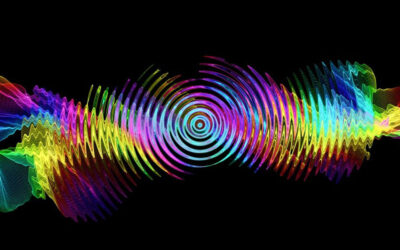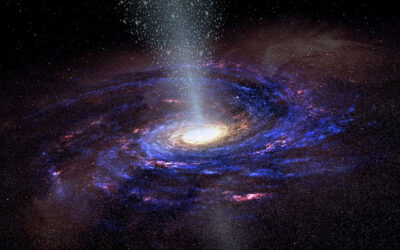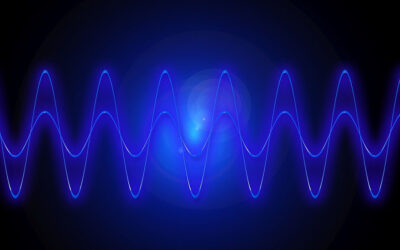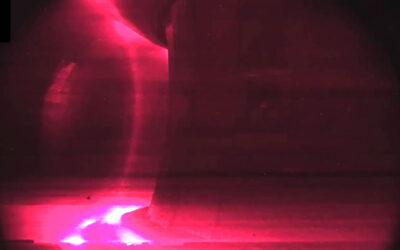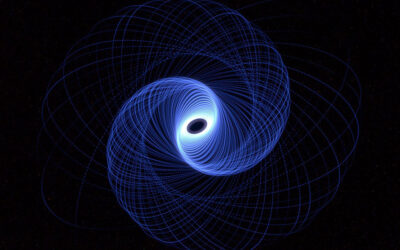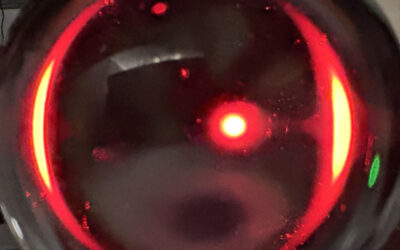Scientists may have found a solution to one of the most profound questions in cosmology: What drove the Universe’s rapid expansion immediately after the Big Bang?
“According to what we call ‘standard’ cosmology, our universe is and has been expanding at different rates throughout its history,” explained Humberto Gilmer, a postdoctoral researcher at Brown University and one of the authors of the study, in an email to Advanced Science News.
“To understand this expansion, think of a muffin with some blueberries embedded in it; as the muffin bakes, these blueberries, which aren’t moving in the batter, still move relative to each other because the whole muffin is expanding. In a nutshell, that’s how our universe behaves. Inflation, then, is a period when that expansion happened extremely rapidly. But how do you get such a period? That’s an open question we sought to answer.”
Their new findings suggest that the Higgs boson, a particle discovered in 2012 at the Large Hadron Collider, might be the culprit and could have played a pivotal role in this process.
Understanding inflation
Scientists think that the universe went through a very rapid growth spurt right after the Big Bang, a theory called “inflation.” While it’s not fully proven, most scientists believe it because it explains several things we see today. For example, inflation suggests that in just a tiny fraction of a second, the universe expanded by an enormous amount — up to trillion quadrillion times.
This rapid growth could explain why the universe appears so “flat” (meaning it doesn’t have much of a curve) by stretching out any initial curvature. It also helps explain how galaxies and other cosmic structures formed, by stretching tiny differences in the universe’s energy into much bigger ones.
Traditionally, scientists assume that inflation was driven by a hypothetical field known as the inflaton field, which at the microscopic level consists of particles called inflatons, similar to how the electromagnetic field is made up of photons.
“If you turn the crank on the math, you find that the simplest way to achieve inflation is by assuming there exists an inflaton field that takes on a non-zero value everywhere in space, for a period of time,” said Gilmer. “During that time, that non-zero value will actually make gravity in a sense ‘run backwards’ and cause rapid expansion rather than the contraction you’d usually expect of gravity.”
According to this theory, when inflation ended, inflaton particles decayed into familiar particles like quarks and electrons, which eventually formed the stars and galaxies we see today. However, inflatons have never been observed in particle experiments, and their theoretical origins remain unclear.
In their study published in Progress of Physics, Gilmer and his colleagues propose that the Higgs boson could serve as the inflaton.
The Higgs boson is unique among known elementary particles because it has no spin, a property of elementary particles that is related to their intrinsic angular momentum, which is kind of like their natural “twist” or “rotation.” This is a property it shares with the hypothetical inflaton.
But within the Standard Model of particle physics, the Higgs boson’s interactions do not support an expansion consistent with astronomical observations. To fix this, researchers suggested a new approach that is similar to the Standard Model but allows the Higgs to cause inflation.
A particularly intriguing aspect of their theory is the suggestion that the Higgs boson is not an elementary particle, like electrons or quarks, but a composite one similar to protons and neutrons. However, what makes up a Higgs boson remains unspecified.
“This model is agnostic to the actual makeup of the Higgs,” said Gilmer. “Using an analogy, we’re treating the Higgs like a glass of water without delving into the molecular structure. At some point, a theory like this would need to identify the ‘molecules’; we made no attempts to guess what those might be.”
Future tests and prospects
The proposed theory predicts that the Higgs boson might behave a little differently than we currently understand and that there could be new particles we haven’t discovered yet. . However, before searching for them, it is crucial to confirm that inflation did actually .
“We have very good reasons to believe that the true history of our Universe contained a period of inflation, but to prove that experimentally still requires a ‘smoking gun’ of sorts,” explained Gilmer. “Gravitational wave experiments, such as the European Space Agency’s LISA should have the necessary sensitivities to perhaps directly find the smoking gun in the form of what are called ‘primordial’ gravitational waves.
“If inflation is confirmed, then the next step is determining which theory of inflation is correct. In our case, that’s where particle experiments come in, as our construction predicts new particles at various masses, but that most importantly are related to each other, not just randomly assorted.”
Beyond experimental efforts, further theoretical analyses are needed to assess whether the proposed model aligns with all observable consequences of inflation. The research team acknowledges that additional work is required to validate their theory comprehensively.
“In the immediate future, a follow-up work consisting of what is known as a ‘perturbation’ analysis of this model is almost ready for publication,” Gilmer said. “Any theory of inflation has to be probed beyond just proving that it provides ‘enough’ inflation; it must also be checked that it reproduces the conditions that lead to agreement with quantities we have measured today.”
Reference: Stephon Alexander et al, Higgs Inflation and the Electroweak Gauge Sector, Progress of Physics (2025). DOI: 10.1002/prop.202500020
Feature image credit: flutie8211 on Pixabay












